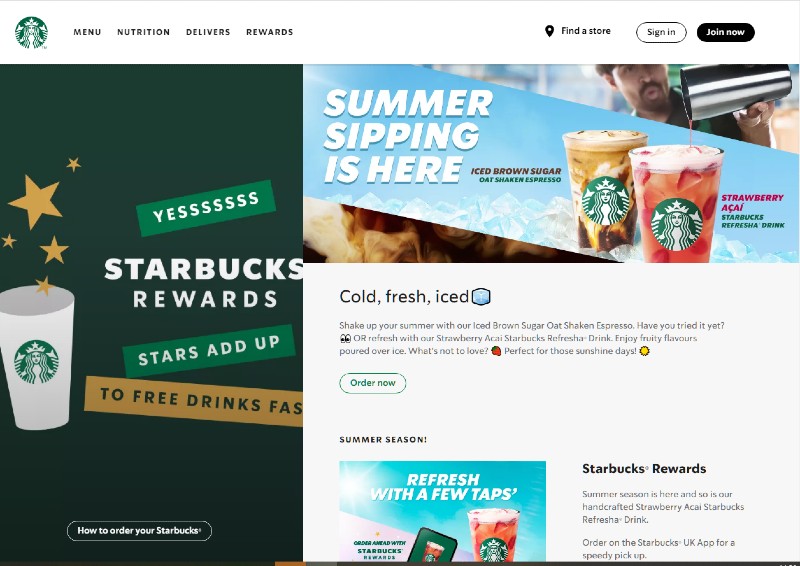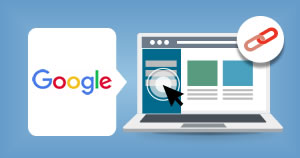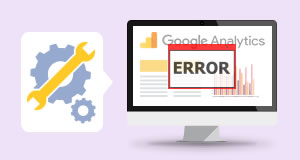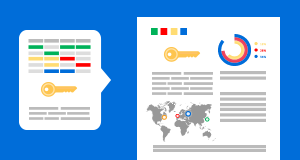
Google is a major player in paid and organic search internationally, with 92% of the search engine market share globally, as of May 2022. In some countries, Google’s market share is even higher, topping 97% in Argentina and Brazil. Considering Google’s huge impact internationally, it is little surprise that companies are choosing to invest large sums in paid advertising on Google. In 2021, Google’s search ad revenue increased by 32.5% year-on-year, indicating that marketers consider Google advertising to be a vital pillar of their international marketing strategy.
However, Google updates its paid search functionality regularly. In fact, Google released nine updates to Google Ads in the first quarter of 2022 alone. To make the most of their ad spend, it is crucial for advertisers to understand these changes and leverage them to improve their campaign performance. This blog post will provide Webcertain’s summary of the top Google Ads trends you need to know about in 2022, to make the most out of your paid search campaigns on Google.
If you want even more insights, we held a webinar on this topic on 12 July 2022. Watch the webinar recording now to get even more learnings!
Trend #1: The rise of smart bidding strategies
In the past, smart bidding options such as “maximise clicks”, “maximise conversions” and “target CPA” left much to be desired by marketers. They were often labelled as ineffective, unpredictable and expensive. However, as the algorithms learn more, smart bidding has advanced beyond its early days and it is an option which the Webcertain team have been finding increasingly effective. In fact, utilising smart bidding options can help to reduce costs and optimise campaigns towards a specific campaign goal, such as driving clicks, conversions or return-on-ad-spend.
For them to be effective, it is critical that smart bidding strategies are implemented properly. Webcertain’s top tips for using them effectively include:
- A/B testing: When implementing automated bidding strategies, we usually create a draft of an existing campaign. We change the bid strategy in the draft to an automated one and run the two versions concurrently. Running the two campaigns side-by-side allows us to evaluate which bid strategy is the most effective over time.
- Give smart bidding time to learn: The best practice is to run tests for four to six weeks. During this optimisation period, campaign performance may drop. Campaign Managers should avoid making changes to the campaigns during this period, including adding or removing keywords and ads. Making changes can result in losing data and potentially needing to begin the optimisation period again. For smart bidding strategies to be effective, they should be implemented when campaigns have been live for some time and have already amassed high volumes of performance data (including impressions, clicks and conversions), which Google can use to optimise effectively towards your chosen goal.
- Set a limit: Smart bidding can be expensive if not used correctly. We recommend using maximum bids when using strategies such as “maximise clicks”. Otherwise, Google may spend large budget amounts on a single click.
- Be realistic with your targets: If a “target CPA” bid is set too low, the campaign may lose large quantities of traffic. The best practice is to evaluate past performance and set maximum bids based on real historical data.
Trend #2: Machine learning and ad copies
Google has announced that from 30 June 2022, advertisers will no longer be able to create new expanded text ads. This is another step towards machine learning and automated ad copy delivery, which Google has been championing for some time. At Webcertain, we have discovered that machine learning can be highly effective for ad copies. It can be difficult to anticipate exactly which ad copies will perform best in each market. Using machine learning, Google evaluates the data and serves the most effective ad accordingly. Some of the key ad types using machine learning include:
- Responsive search ads (RSAs): RSAs feature 15 headlines and four descriptions. Over time, Google tests different combinations of headlines and descriptions, learning which combination is most likely to drive results for an individual query. At Webcertain, we use at least two RSAs per ad group, providing more opportunity for Google to create winning combinations. It remains crucial that ad copy is engaging, tailored to the platform and fully localised by a native speaker of the target language.
- Dynamic search ads (DSAs): DSAs effectively fill gaps in your keyword-based campaigns. As an advertiser, all you need to do is provide a creative description and set up your DSA campaign. When someone searches on Google with queries relevant to the titles and frequently used phrases on your website, Google Ads will create a relevant headline for your ad and choose a related page on your website to use as the ad landing page.
At Webcertain, we have found DSAs to be highly effective. For one client advertising in the Netherlands (typically a challenging market), we found that conversion rates for DSAs were 48% higher than for traditional search. Another client advertising in France achieved a 59% reduction in cost-per-click when DSAs were used, whilst conversion rates increased by 84% compared to traditional search.
Although both of these ad types use machine learning, PPC Managers still need to create and monitor tests to ensure that campaigns are running at an optimal level. As Google moves towards greater use of machine learning, we recommend testing new ad copy options and evaluating the data to determine what drives success for your business in each market.
Trend #3: Data regulation
Cookies have been an important part of paid online advertising for some time. However, during recent years, internet privacy has become a growing issue. Consumer trust is low. In fact, in France 42% of internet users are concerned about how companies might use their online data. This is a theme we are seeing reflected in markets around the world.
The emergence of laws like the General Data Protection Regulation (2018) reflect this focus on data privacy – as does the Privacy Sandbox initiative from Google, which is expected to result in Google phasing out cookies from Chrome in 2023. The expected outcome is that less authenticated data will be available for advertisers, which will make granular targeting on Google Ads more difficult.
It is important to take action now to mitigate the impact of these changes. Advertisers should shift their focus to bringing in more first-party data, using gated content (such as e-books, white papers and webinars) to acquire user information. Mailing lists, chatbots and blog subscriptions are other useful tools for generating user data. Advertisers can use this information to remarket to users using relevant content.
Beyond generating and storing first-party data, advertisers should also make sure that they have the integrations in place to extract, share and act on these insights.
Trend #4: The importance of knowing your markets
As data becomes less readily available and targeting becomes less precise, advertisers are realising they need to know their markets better. A one-size-fits-all strategy simply does not cut it in today’s crowded marketplace.
It is crucial to understand the digital landscape and user behaviour in your target country. Conduct detailed SWOT analysis, persona-based exercises, audience profiling and social listening. This will help you to understand your audience, their challenges and the kinds of messaging which will appeal to them most effectively. Competitor analysis can also give advertisers an excellent idea of similar businesses’ activity in a market and help them to identify new opportunities.
If you are struggling with where to start, Webcertain’s online consumer behaviour report is a great resource. The report provides cultural information about 38 countries, based on research by the renowned social psychologist Geert Hofstede and examines what this means for digital marketers operating in these countries.
It is important to understand your markets and tailor your ad copy to each target country. However, this in no way undermines the importance of A/B testing. Supplying Google with engaging, localised ad copy and split testing different variations is key for giving your campaigns the best chance of success.
Trend #5: CRO is more important than ever
For most marketers, directing users to your landing page is only half the battle. Whether your goal is driving purchases, form fills or engagement on your website, your landing page is just as important as your PPC campaign set-up. To achieve your goals, it is important to make the conversion process on your landing pages as seamless as possible.
We recommend reviewing the positioning of your menus, buttons and forms to make navigation as clear as possible. Experimenting with colours and images can also help improve landing page performance. According to HubSpot, only 17% of marketers use landing page A/B testing to improve conversion rates. Testing different landing pages is an excellent way to get ahead of the competition in 2022.
It is also important to understand that optimal landing page design varies significantly around the world. For instance, in APAC markets such as Japan and South Korea, landing pages usually feature many more images, graphics and text than is usually seen in European and North American markets. This is exemplified in the below screenshots of the Starbucks website in Japan and the UK.
Starbucks’ Japanese website:

Starbucks’ UK website:

International marketers should also localise their landing pages by:
- Ensuring that prices are displayed in the local currency.
- Using local weights and measurements.
- Offering local online payment methods (for example, in addition to Visa and Mastercard, you may also consider offering payment via PayPay and Pay-easy in the Japanese market).
- Featuring market-specific case studies and testimonials on their websites, so that potential customers can see how they helped similar people or businesses locally.
- Considering local hosting, especially if the website has speed issues.
It is also important to acknowledge that in most markets, the amount of mobile traffic is high. For instance, in Spain, 52% of internet traffic comes from mobile phones, along with 49% in the US and 48% in France. Given that one-third of smartphone users will immediately visit another company’s website or mobile app if they do not get what they need right away, it is important that your website is well-optimised for mobile.
Once again, A/B testing is incredibly important. Utilise all the tools at your disposal, including Google Analytics, Google Lighthouse, Hotjar and beyond. These will help you to understand the CRO issues impacting your landing page and split test new page variations to drive enhanced performance for your website.
Trend #6: The importance of getting the fundamentals right
As less data becomes available to advertisers and competition on paid search continues to grow, it is important to get back to basics.
At Webcertain, we recommend examining your offers and copy consistently. Analyse which offers are converting and identify others which need updating. Consider whether you are accounting for seasonality, audience fatigue and new competitors. New ad copy variations should be tested bi-monthly, with a six-week optimisation period in between, allowing you to evaluate the data and discover which variations perform best.
It is also recommended to refresh keyword research approximately every six months, with monthly search query reports. The latter is designed to discover valuable new keywords, as well as low-performing and irrelevant search terms which can be added as negative keywords.
Both keyword research and ad copy should be fully localised, with your target audience in mind. Translation, localisation and copywriting should always be done by a professional native speaker.
Bonus trend: Diversification of channels – looking beyond Google Ads
Google has 92% of the search engine market share globally, but investing on other search platforms can help you to tap into the remaining 8%. Additionally, the average consumer needs approximately eight touchpoints from a brand before they purchase a product. Advertising on multiple channels can help to provide more touchpoints with your brand, encouraging conversion.
Competitor platforms can also sometimes drive better performance than Google. Google is a very popular platform with advertisers, which increases competition and CPAs. We have found the cost-per-conversion can be over 38% lower on Microsoft Ads when compared to the same campaigns on Google Ads. Conversion rates for one client were 62% higher on Microsoft Ads than Google in the UK market and 52% higher for France.
For this reason, we recommend testing PPC activity on platforms beyond Google. Depending on the markets you operate in, some platforms to consider may include:
- Microsoft Bing: This platform is especially influential in the US and the UK. In the US, Bing has 6.6% market share. With the US having an internet population of 312 million, that is a lot of people!
- Yahoo Japan: In Japan, Yahoo Japan has 17.4% market share (whilst Google has 77%). With Japan having an internet population of 118 million, advertising on platforms beyond Google can yield excellent results in Japan.
Ultimately, advertising on a combination of platforms is the best way to make the most out of your paid search advertising in 2022. We recommend testing out various options and discovering what drives the best results in each of your markets.
Key takeaways
If one thing is for sure, it is that best practice changes quickly on Google. It is important for advertisers to embrace new trends – including the rise of AI and machine learning – and test new features constantly. Successful marketers will also need to get back to basics in 2022, ensuring that they follow and exceed PPC and CRO best practices. Whilst Google remains the dominant paid search platform globally, investing in other paid search channels can also reap huge rewards for advertisers. Whatever 2022 brings in terms of Google Ads updates, our main tip is to get out there and get testing!





